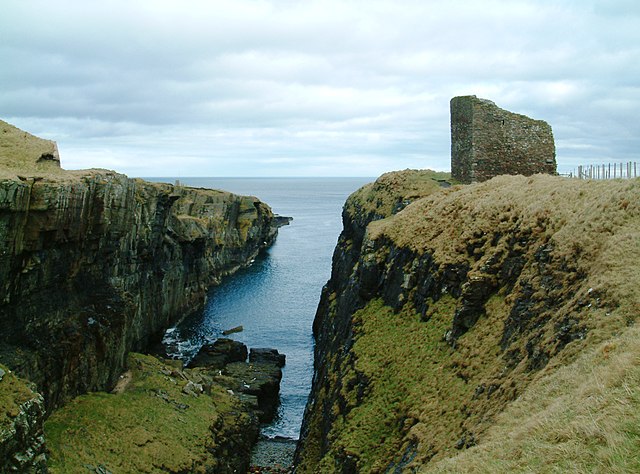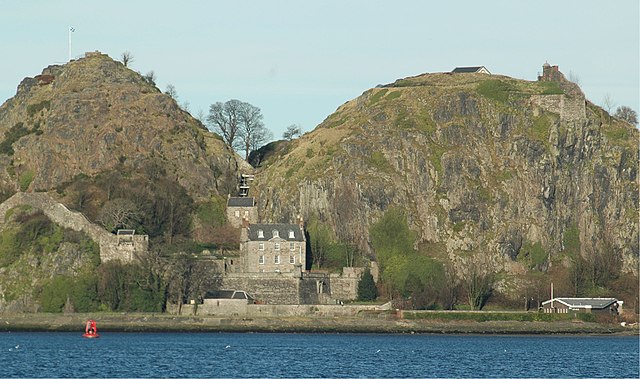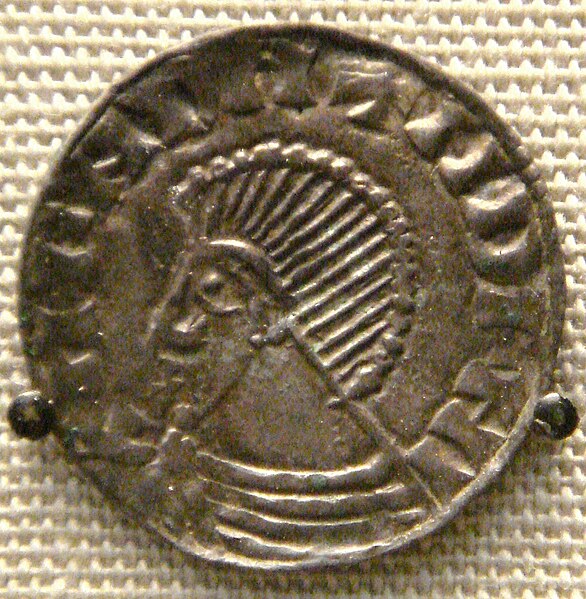Rǫgnvaldr Guðrøðarson ruled as King of the Isles from 1187 to 1226. He was the eldest son of Guðrøðr Óláfsson, King of Dublin and the Isles. Although the latter may have intended for his younger son, Óláfr, to succeed to the kingship, the Islesmen chose Rǫgnvaldr, who was likely Óláfr's half-brother. Rǫgnvaldr went on to rule the Kingdom of the Isles for almost forty years before losing control to Óláfr.
A king gaming piece of the Lewis chessmen. Comprising some four sets, the pieces are thought to have been crafted in Norway in the twelfth- and thirteenth centuries. They were uncovered in Lewis in the early nineteenth century.
Ruinous Castle of Old Wick, a seemingly twelfth- or thirteenth-century fortress, was possibly the power centre of Haraldr Maddaðarson.
According to tradition, the stone circle Clach an Righ ("King's Stone"), near Syre, marks the site where Haraldr Maddaðarson was defeated by Rǫgnvaldr.
The Isle of Man Airport encompasses a site once called Ronaldsway. Rǫgnvaldr may well be the eponym of this place name.
The Kingdom of the Isles was a Norse-Gaelic kingdom comprising the Isle of Man, the Hebrides and the islands of the Clyde from the 9th to the 13th centuries AD. The islands were known to the Norsemen as the Suðreyjar, or "Southern Isles" as distinct from the Norðreyjar or Northern Isles of Orkney and Shetland. In Scottish Gaelic, the kingdom is known as Rìoghachd nan Eilean. The territory is sometimes called the Kingdom of Mann and the Isles, although only some of the later rulers claimed that title. The historical record is incomplete, and the kingdom was not a continuous entity throughout the entire period. At times the rulers were independent of external control, although for much of the period they had overlords in Norway, Ireland, England, Scotland or Orkney. At times there also appear to have been competing claims for all or parts of the territory. The islands have a total land area of over 8,300 square kilometres (3,205 sq mi) and extend for more than 500 kilometres (310 mi) from north to south.

Signature page from the Annals of the Four Masters
Folio 32v of the Book of Kells which may have been produced by the monks of Iona and taken to Ireland for safekeeping after repeated Viking raids of the Hebrides.
Modern Dumbarton Castle, the site of the 9th-century siege by the Uí Ímair
A posthumous "Sihtric" coin from the British Museum, minted at Dublin c. 1050








